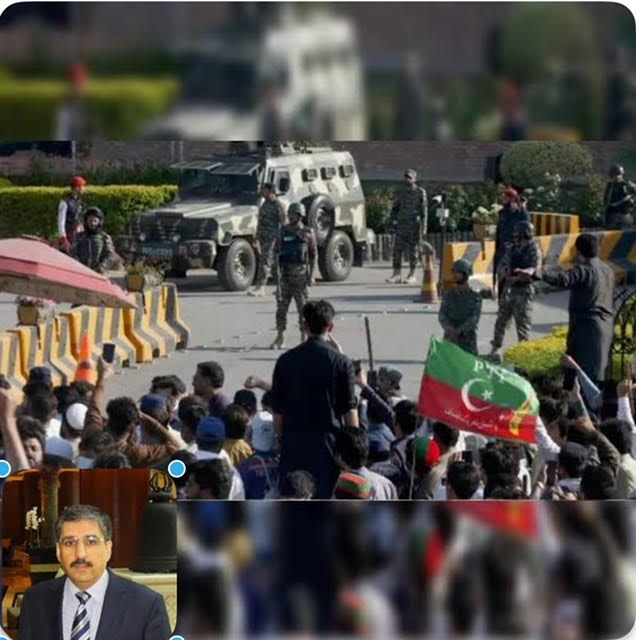
Saima Khan
I. Introduction: Post Taliban Terrorism Surge
Pakistan’s internal security has situation has worsened due to terrorism and insurgency in tribal areas of KP and Balochistan. After a few years’s lull, terrorism and violence increased after Taliban government came into power in August 2021.Terrorism-related deaths surged by 45% to 1,081 fatalities in 2024, the largest year-on-year increase in over a decade for Pakistan (Dawn, 2025; visionofhumanity.org, 2025). Attacks more than doubled, from 517 in 2023 to an unprecedented 1,099 in 2024, marking the first time incidents have topped 1,000 since the Index began (Dawn, 2025).
II. A Decade of Decline: Pakistan’s Escalating Terrorism Landscape (2021-2024)
The Global Terrorism Index, produced by the Institute for Economics & Peace (IEP), tracks terrorism’s impact across 163 countries (visionofhumanity.org, 2025; economicsandpeace.org, 2024). Pakistan’s trajectory within this index over the past four years is quite grim, with terrorism-related deaths consistently rising since 2019, marking the fifth consecutive year of this upward trend and the largest increase in a decade (Dawn, 2025). Incidents more than doubled from 517 in 2023 to 1,099 in 2024, while fatalities surged by 45% to 1,081 in the same period (Dawn, 2025; visionofhumanity.org, 2025).
III. The Roots of Resurgence: Deconstructing Pakistan’s Terror Drivers
Pakistan’s escalating terrorism crisis isn’t a mystery; it’s a predictable outcome of several unaddressed issues.
Resurgence of Tehrik-e-Taliban Pakistan (TTP)
The Tehreek-e-Taliban Pakistan (TTP) is the primary culprit, responsible for a staggering 52% of all terrorism-related deaths in Pakistan in 2024 (Dawn, 2025; visionofhumanity.org, 2025). It’s the fastest-growing terror group globally, with a 90% surge in attributed deaths in 2024 (reliefweb.int, 2025). In 2024, the TTP carried out 482 attacks, resulting in 558 deaths (Dawn, 2025). Their goal is simple: violently overthrow the Pakistani government and establish their version of Islamic law (cfr.org, 2025; prif.org, 2025).
Cross-Border Sanctuaries in Taliban-Controlled Afghanistan
While the state draws red lines, terrorists just walk right over them. Instability in Taliban-run Afghanistan directly fuels attacks in Pakistan, especially in Khyber Pakhtunkhwa (KP) and Balochistan (cfr.org, 2025; stimson.org, 2022). These two provinces accounted for over 92% of all fatalities and 86% of attacks in the first quarter of 2024 (newindianexpress.com, 2024). The Afghan Taliban’s return to power in August 2021 gave the TTP a major boost, with Kabul reportedly offering sanctuary to TTP leadership and militants (cfr.org, 2025; prif.org, 2025). This sanctuary stems from deep ideological similarities, as both groups aim to establish an Islamic state based on their strict interpretation of Sharia law and oppose foreign influence (prif.org, 2025). Historically, the TTP also provided the Afghan Taliban with recruits and shelter during their fight against US and NATO forces (prif.org, 2025). Furthermore, the Afghan Taliban is reluctant to pressure the TTP, partly due to fears of the TTP’s potential alliance with the Islamic State-Khorasan (IS-K), which poses a significant threat to Taliban rule (prif.org, 2025).
Militancy in Balochistan
Beyond the TTP, the Balochistan Liberation Army (BLA) and its affiliates are a growing threat. The BLA was behind Pakistan’s deadliest terror attack of 2024—a suicide bombing at the Quetta railway station that killed at least 25 (Dawn, 2025; visionofhumanity.org, 2025). BLA attacks surged from 116 in 2023 to 504 in 2024, with fatalities quadrupling from 88 to 388 (Dawn, 2025). The Balochistan Liberation Front (BLF) launched “Operation Baam” in 2025, a sweeping offensive targeting government and military installations across Balochistan (timesofindia.indiatimes.com, 2025). The BLA’s willingness to cooperate with Islamist groups makes the threat even more complex (fairobserver.com, 2025; jamestown.org, 2023).
Governance Deficits and Strategic Blind Spots
Pakistan’s chronic governance deficits are a festering wound, with political turmoil and corruption creating fertile ground for militants. Where the state is weak, absent, or perceived as unjust, militant groups strategically step in, offering rudimentary services or a sense of order, thereby gaining a crucial foothold and popular acquiescence (cfr.org, 2025; rand.org, 2010). But equally damning is a counter-terrorism approach that’s more reactive than effective. While military operations like Zarb-e-Azb cleared some areas and intelligence efforts occasionally nabbed high-value targets or terror financiers like Sajid Mir (state.gov, 2022), these were largely reactive, often launched only after horrific attacks or under external pressure (icwa.in, 2024). Operations like Azm-e-Istehkam (launched June 2024) are often “more for optics than for fighting terrorism” (icwa.in, 2024. The intelligence apparatus, while achieving tactical wins like “Operation Green Bolan” (ctc.westpoint.edu, 2025) or prosecuting a terror financier (state.gov, 2022), consistently misses the strategic plot. The March 2025 Jaffar Express hijacking by the BLA was a glaring intelligence failure, exposing the “limits of Pakistan’s counterinsurgency strategy” (fairobserver.com, 2025) and highlighting widespread gaps in understanding the TTP’s and BLA’s “growing planning capability” (fairobserver.com, 2025). This reactive, narrow focus means winning skirmishes while losing the war.
Understanding Their Growing Planning Capability
The “growing planning capability” of groups like the TTP and BLA isn’t just a buzzword; it’s a terrifying evolution in their operational sophistication. For the BLA, this means moving beyond sporadic attacks to highly coordinated, large-scale operations. The March 2025 Jaffar Express hijacking is a prime example: militants sabotaged tracks, detonated explosives, and took hostages, specifically targeting security personnel on leave (fairobserver.com, 2025; ctc.westpoint.edu, 2025; ctc.westpoint.edu, 2025). This wasn’t a random act; it was a meticulously planned assault on national infrastructure. Similarly, “Operation Baam” in 2025 saw the BLF launch a sweeping offensive across multiple districts, disrupting communication lines and striking military checkpoints, demonstrating an emboldened and increasingly coordinated insurgency (timesofindia.indiatimes.com, 2025; timesofindia.indiatimes.com, 2025). The BLA has also shifted towards using female suicide bombers and has broadened its support base beyond traditional tribal elites to include women and the working class, indicating a more formidable and adaptable movement (fairobserver.com, 2025; fairobserver.com, 2025).
For the TTP, their increased operability and improved weaponry, often acquired after the Afghan government collapsed, allow them to execute more lethal and frequent attacks (cfr.org, 2025). Their ability to carry out 482 attacks resulting in 558 deaths in 2024, a 91% increase, speaks volumes about their enhanced planning and execution capabilities (Dawn, 2025). Furthermore, their success in merging with Baloch militant groups demonstrates a strategic expansion and a willingness to form alliances, making them a more complex and resilient threat (jamestown.org, 2023; jamestown.org, 2022). The overall surge in both attacks and fatalities across Pakistan points to a qualitative leap in the operational capacity of these groups, indicating they are better organized, better equipped, and more strategically focused than ever before (fairobserver.com, 2025).
IV. Hard Truths: Recommendations
Enough bedtime stories — here’s what needs to happen before the ground sinks any deeper. Pakistan’s alarming position demands a radical shift. The time for half-measures is over.
- Secure the border, for real. This isn’t a suggestion; it’s a non-negotiable imperative. Implement real-time intelligence sharing and joint operations with Afghanistan, because diplomatic niceties won’t stop cross-border incursions (GCTF, 2025; state.gov, 2022).
- Build an Integrated Intelligence Architecture: Shift to relentless, intelligence-driven preemption. Stop playing whack-a-mole. This is how modern counter-terrorism is done: by establishing multi-agency fusion centers to integrate all-source intelligence, leveraging advanced AI and drone technology for predictive analysis, and enabling proactive targeting to neutralize threats before they materialize (thesvi.org, 2025; NCTC, 2020; FEMA, 2025; DHS, 2020). Fusion centers linking military, police and civil agencies, and leverage advanced analytics and AI to analyze open-source and signals data. Network provincial counterterrorism departments (CTDs) with federal agencies so threat information flows without delay. This unified approach will enable “predictive analysis” and coordinated countermeasures, rather than isolated siloed efforts. Fusion centers serve as critical hubs, receiving, analyzing, and sharing threat information between federal, state, local, tribal, territorial, and private sector partners. They provide interdisciplinary expertise and situational awareness, empowering front-line personnel to understand local implications of national intelligence, and directly contributing to investigations by federal entities like the FBI Joint Terrorism Task Forces (JTTFs) in the U.S. It requires a constant, aggressive pursuit of emerging threats, enhancing the ability to gather and analyze actionable intelligence, and ensuring seamless information flow between military, intelligence, and law enforcement agencies (state.gov, 2022; NCTC, 2020).
- Empower and Modernize Civilian Police. Assign primacy for urban counterterrorism to provincial police forces and equip local police stations with the tools and training they need. Develop clear SOPs and training in terrorist indicators (surveillance, first-response) for all officers. Computerize and network all police records so that local stations feed a national terror-threat database, and run public outreach campaigns to build trust and secure community cooperation
- End the policy malpractice. Overhaul the criminal justice system, ensure rule of law, and prosecute terror financing with unwavering resolve. A state that cannot deliver justice is a state that invites chaos (state.gov, 2022; GCTF, 2025; OHCHR, 2014).
- Strengthen Rule of Law and Oversight. Ensure counterterrorism operations respect human rights and due process to maintain public trust. Reform military courts and end extrajudicial practices (e.g. Rangers’ shoot-to-kill) so that all suspects face a transparent justice system. Prosecute terror financing rigorously (including informal banking networks), and extend the protective reach of law equally to all communities, reinforcing that “the rule of law must be all powerful” for peace to prevail.
- Dismantle the ideological supply chain of extremism. Develop national counter-narratives, reform educational curricula (especially madrasas), and implement community engagement programs. Ideas, however toxic, don’t die with bullets; they need to be countered at their source (state.gov, 2022; GCTF, 2025; preventstrategy.org.uk, 2011).
- Rebuild trust in marginalized regions. Invest in inclusive governance and basic services, turning grievances into civic participation, not recruitment fodder (state.gov, 2022; GCTF, 2025).
- Force inter-agency coordination. Fusion centers and cross-government partnerships are not optional; they are the backbone of a coherent national security posture. Seamless information flow between military, intelligence, and law enforcement is non-negotiable (DHS, 2020; NCTC, 2020).
The author is security analyst affiliated with The Strategic Brief


